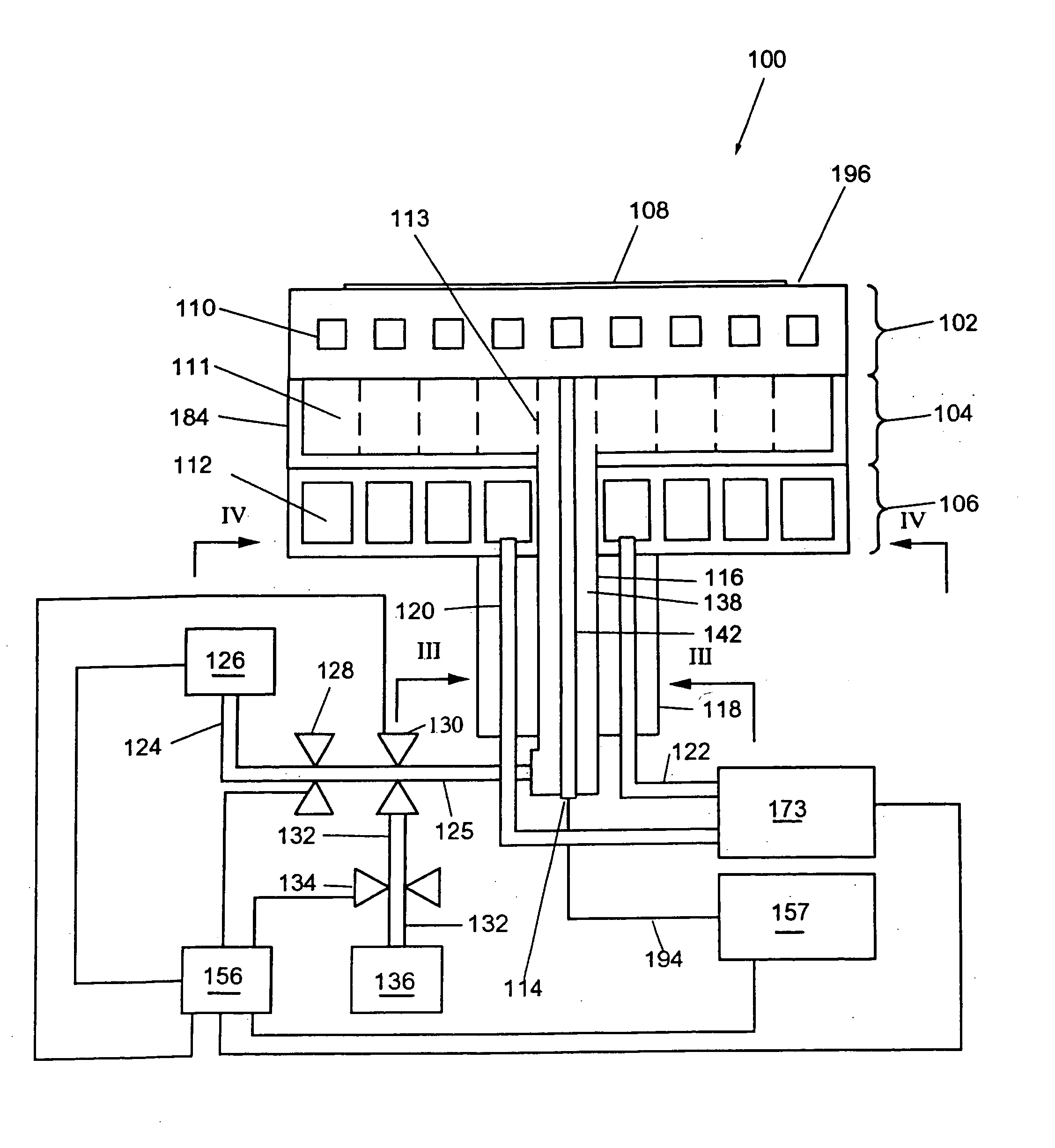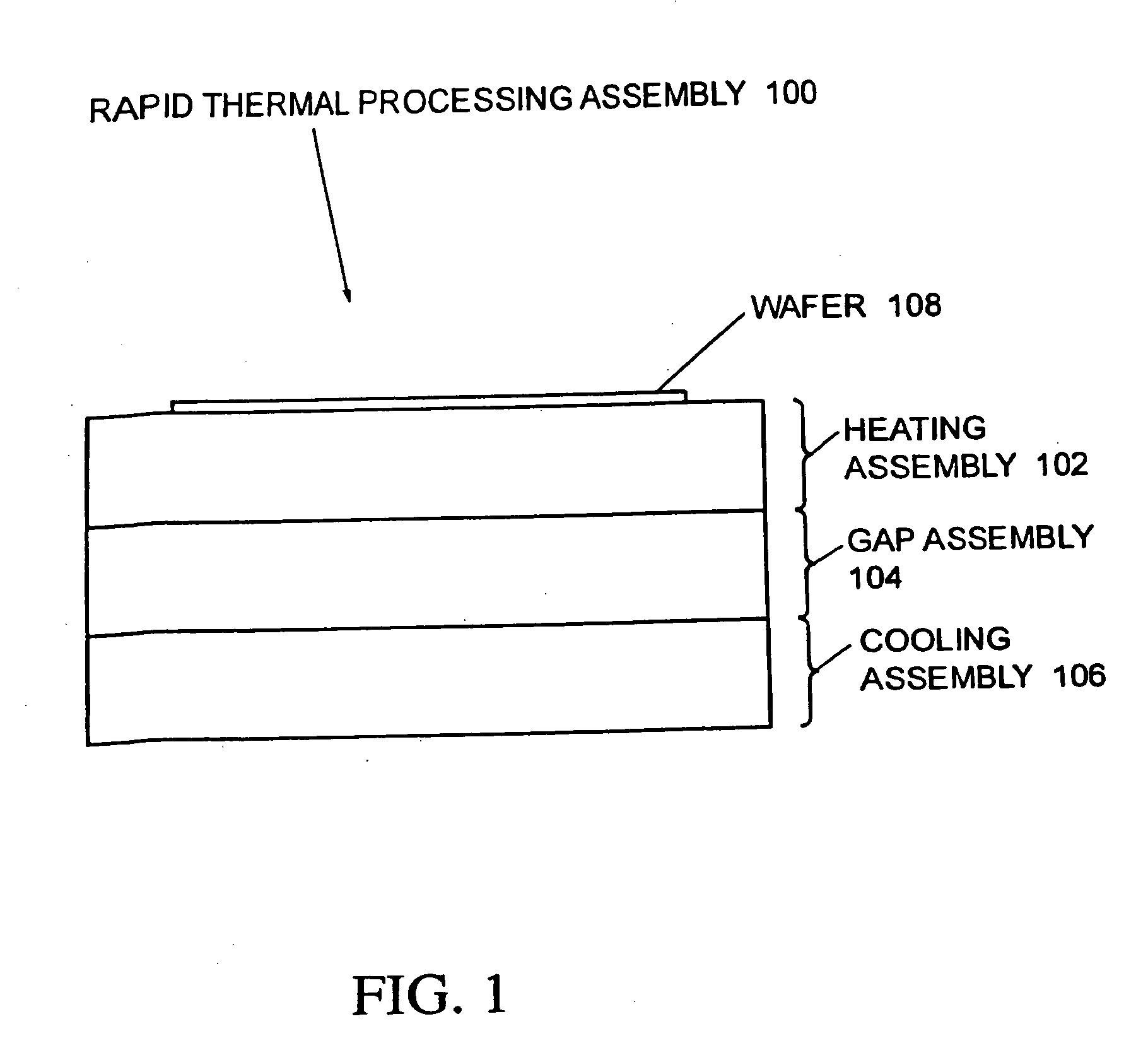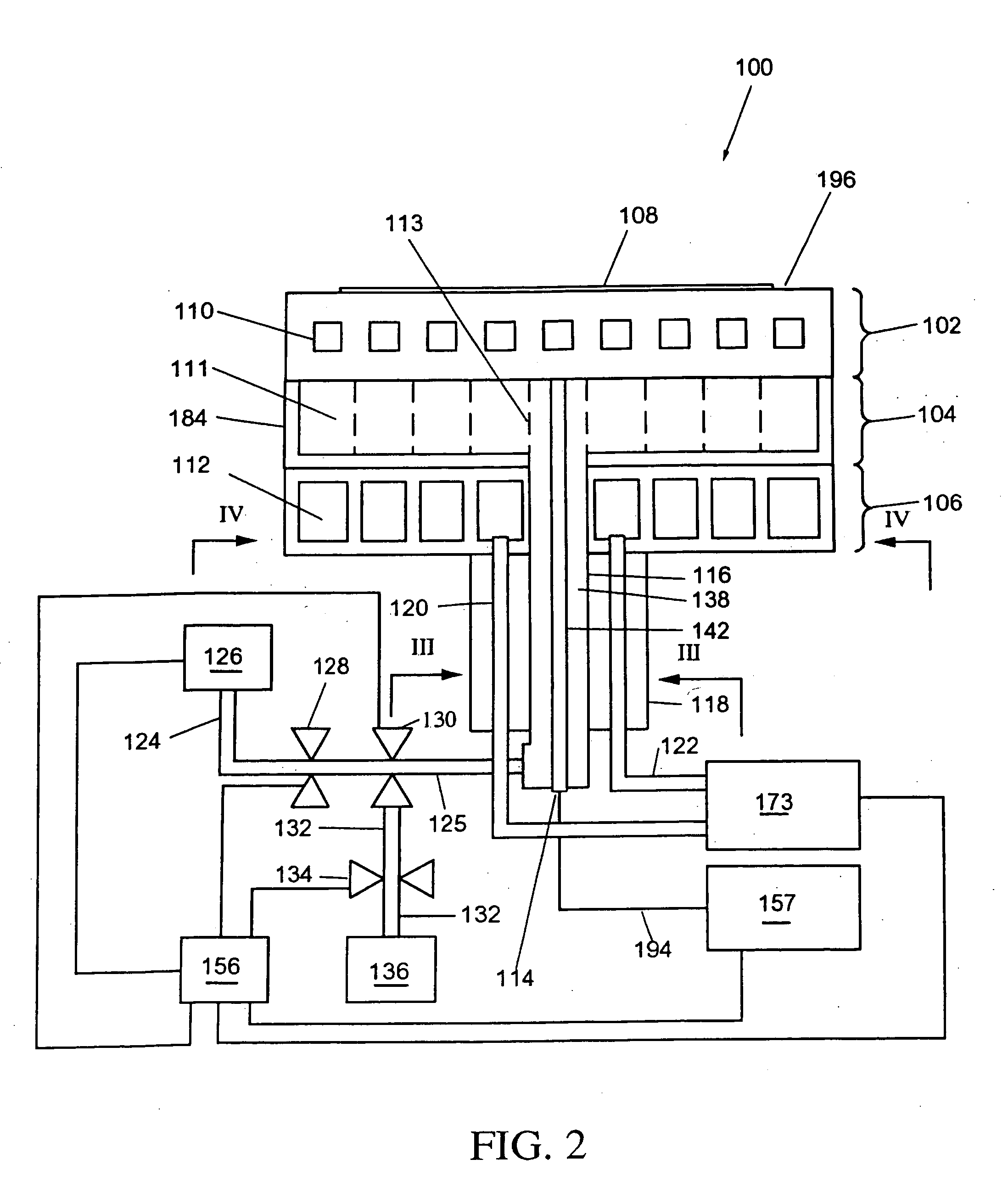Method and apparatus for active temperature control of susceptors
a susceptor and active temperature technology, applied in the field of thermoplastic processing of substrates, can solve the problems of excessive diffusion, time and energy required, and inability to provide optimal, and achieve the effects of low thermal conductance, high thermal conductance, and adversely affecting device performan
- Summary
- Abstract
- Description
- Claims
- Application Information
AI Technical Summary
Benefits of technology
Problems solved by technology
Method used
Image
Examples
Embodiment Construction
[0036] The present invention will now be described with reference to preferred embodiments illustrated in the figures. The present invention generally relates to a method and an apparatus for actively controlling the temperature of a susceptor. The apparatus supports a wafer with a heating assembly, beneath which is a thermal conductance region whose thermal conductance is regulated. Furthermore, a cooling assembly is provided beneath the thermal conductance region. The present invention further includes several methods of operating the apparatus.
[0037] Referring now to the drawings, FIG. 1 is an overview of a preferred embodiment of a rapid thermal processing assembly or apparatus 100, which acts essentially as, for example, a novel thermal switch for heating and cooling susceptors used for processing semiconductor wafers. The apparatus 100 generally includes a heating assembly 102, a cooling assembly 106, and a gap assembly or device 104 provided within a thermal conductance regi...
PUM
| Property | Measurement | Unit |
|---|---|---|
| thick | aaaaa | aaaaa |
| power | aaaaa | aaaaa |
| height | aaaaa | aaaaa |
Abstract
Description
Claims
Application Information
 Login to View More
Login to View More - R&D
- Intellectual Property
- Life Sciences
- Materials
- Tech Scout
- Unparalleled Data Quality
- Higher Quality Content
- 60% Fewer Hallucinations
Browse by: Latest US Patents, China's latest patents, Technical Efficacy Thesaurus, Application Domain, Technology Topic, Popular Technical Reports.
© 2025 PatSnap. All rights reserved.Legal|Privacy policy|Modern Slavery Act Transparency Statement|Sitemap|About US| Contact US: help@patsnap.com



